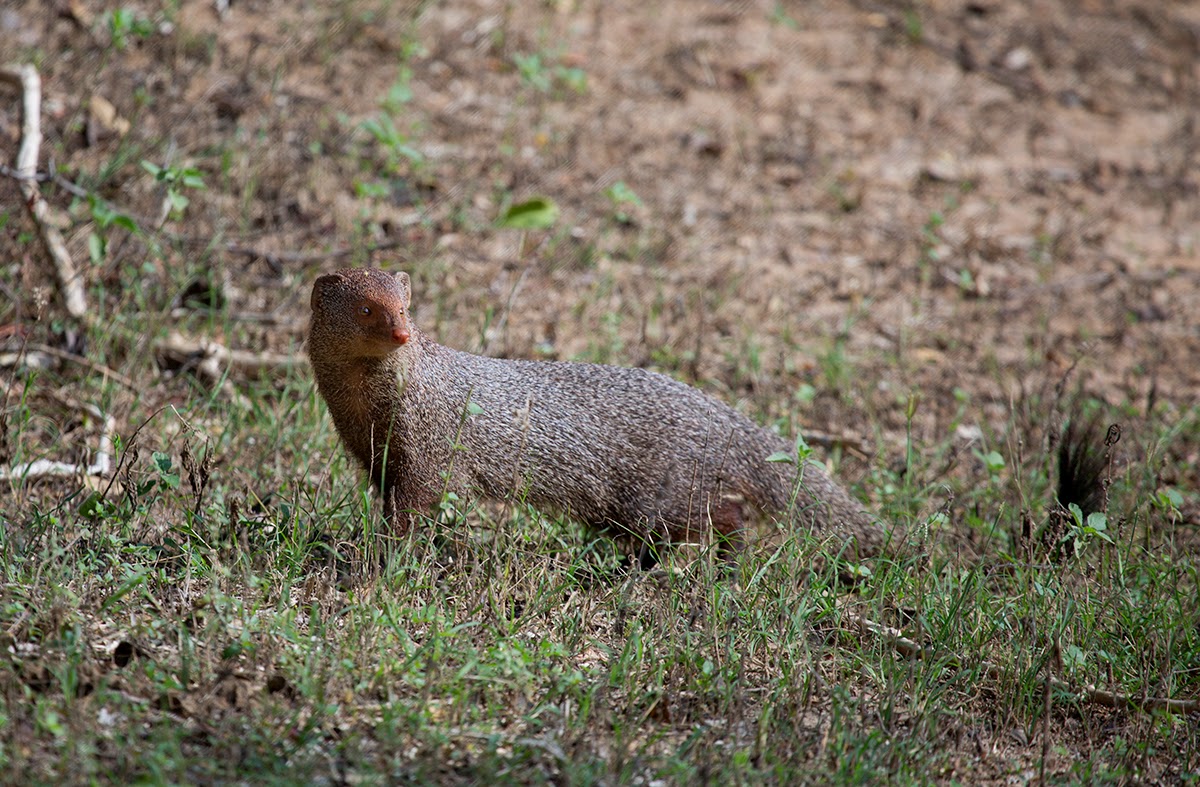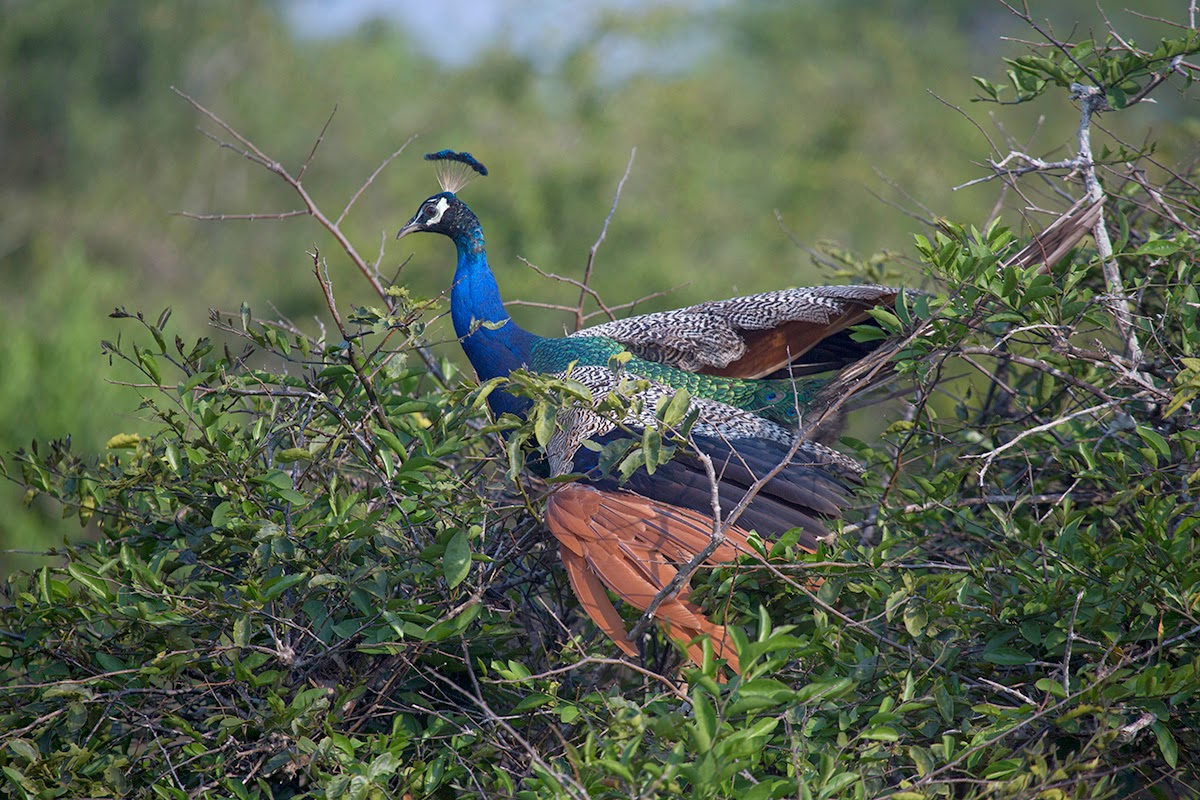We opted for maximising our safari driving time, so as soon as we had deposited our bags in the tent and splashed the dust from our faces we were back in the jeep heading for the park, cameras, long lenses and monopods at the ready. We were accompanied on each safari drive by a trained naturalist and at the park entrance we were joined by a tracker from the Park service. This meant a trained pair of eyes on each side of the vehicle, on the look out for the slightest indication that a critter lurked in the jungle through which we soon found ourselves hurtling at breakneck speed. Our minders were in mobile phone contact with their counterparts in other jeeps throughout the park, meaning that information about sightings of prized animals like leopards and sloth bears was shared around. Of course, this led to traffic jams at times, but the animals didn't seem to mind the crowds too much. We ended up having one afternoon, one whole day and one morning safari in our two-night sojourn at Mahoora. This involved waking at 5 am both mornings, and resulted in aching muscles from bouncing around in the jeep for hours on end. We were fortunate enough to photograph some magical animals and birds in their own beautiful habitat, making all the pain worthwhile.
Here's a quick sample of what we saw...
 |
| Yala Leopard |
 |
| Crested Serpent Eagle (Canon EF300mm f2.8 + 2X Extender) |
 |
| Brahminy Kites (Canon EF 100-400mm f4.5-5.6 L) |
 |
| Grey-headed Fish Eagle |
 |
| Serpent Eagle |
 |
| Black-faced Langur |
 |
| Black-faced Langur close-up |
 |
| Tocque Macque Mother and very young baby |
 |
| Indian Brown Mongoose |
 |
| Sloth bear |
 |
| Green Bee Eater |
 |
| Green Bee Eater |
 |
| Chestnut-headed Bee Eater |
 |
| Orange- Breasted Green Pidgeon |
 |
| Rose-ringed Parakeets |
 |
| Sri Lankan or Indian Pond Heron |
 |
| Peacock These birds are native to Sri Lanka and India and are very common throughout Yala National Park |
 |
| Although Peacocks can fly, they don't like it much but will roost in trees to avoid predation from lepoards. |
 |
| Large egret |
 |
| Indian Pipit A tiny bird that feeds off seeds and small grubs in the leaf litter of the bush. It is perfectly camouflaged and hard to see unless it moves! |
 |
| Trio of Painted Storks |
 |
| Spoonbill These graceful birds sift the bottom of waterways like this, 'spooning' side to side for food. |
 |
| White Breasted Kingfisher These small iridescently-coloured birds are hard to miss when they fly but even harder to shoot unless they are resting on a conveniently placed branch like this one. |
 |
| Spotted Dove |
 |
| Pelican Seen flying across the lagoon with Elephant Rock in the background |
 |
| Cattle Egret riding a water buffalo as it plods its way through a lotus infested tank (Sri Lankan reservoir) |
 |
| Male Spotted Deer in late afternoon sunlight |
 |
| Sri Lankan freshwater crocodile or Mugger warming up in the early morning sun. These can grow up to four metres in length |
 |
| Close-up of a large, one metre Land Monitor |
 |
| Conjugal Bliss #1This male should really be smoking a cigarette by now... |
 |
| Conjugal Bliss #3 Nat's shot of the male after he had mated several times - licking this chops in satisfaction maybe? |


















Fantastic images. Looks like a great place to visit.
ReplyDelete